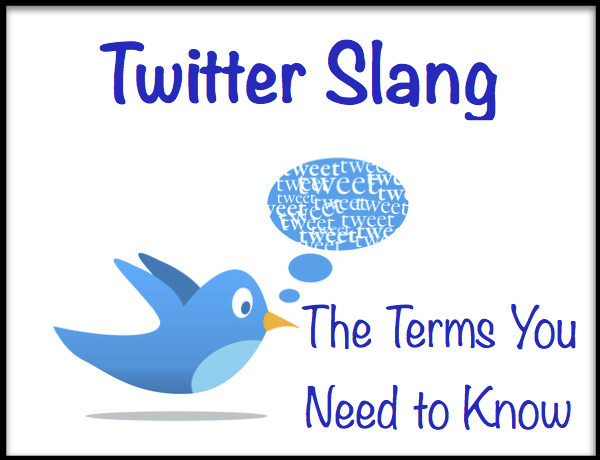For those who may be unfamiliar with Twitter slang and Twitter lingo, it will be vital for you to be apprised of certain definitions before we launch into a detailed discussion of how it works, how it can help you, and how it can hurt you. Of course, these twitter slang definitions ARE coming from me, so you should take them with a grain of salt…the size of Cleveland.
Tweeps (noun): Twitter people. In Twitter lingo, tweeps are the cool people that you hang out with on Twitter. They are often interesting, sometimes scary, and almost always sarcastic.
Freshman (noun): This is a brand new Twitter user. Sometimes they are also called “newbies” or “eggs” (because you get an egg AVI when you first start your account. Everyone knows you don’t know what you’re doing, usually based on the fact that you still don’t have an AVI.
AVI (noun): An AVI is short for “Avatar Image.” Basically, it’s your visual representation when you’re playing around on Twitter. It doesn’t have to be a picture of you. In fact, some of the most popular AVIs are just pictures of cleavage.
Follow (noun): This is when someone chooses to follow you on Twitter.
Follower (noun): These are what you call people who follow your awesomeness.
Star (noun, verb): A star, or a “like,” shows the tweeter that you like what they have to say. There are different ways to use stars. Often, stars are used by people to show that they have heard your comment and recognize it as valuable. Other times, a star means that the person likes what you have to say, but not enough to share it with their followers.
RT (noun, verb): RT is Twitter slang for “Retweet,” and can be used to both describe the action of retweeting and the concept of getting a retweet. Although stars are great to show people you like what they say, a RT means that you share the tweet with other followers. If people are retweeting you, it means brand new people who don’t follow you are seeing what you have to say. It’s the best way to get new followers.
Hashtag (noun): A hashtag (#) is a way for the internal server of sites like Twitter, Facebook, Kik, and Instagram to organize certain types of tweets. For example, if you wanted to see everyone who was talking about Binobo monkeys, you could put #binobo in the search bar and see everyone who was using that hashtag. That way, you don’t have to listen to every idiot’s stupid conversation. You could just pick the idiots who liked the same kind of stuff as you and see what they’re saying.
DM (noun), DM-ing (verb): A DM is short for “Direct Message.” It’s like the private booth in the back of the club that only has space for two. As such, DM-ing a person on Twitter is akin to asking them to come into your parlor for a personal massage. Well, not always. But, 98% of the time.
Subtweet (noun), Subtweeting (verb): Sometimes, people want to say something to a specific person, but don’t have the guts (or the liability insurance) to just come out and DM the person. Thus, the subtweet is born. Usually a little spicy, this is when a person says something relatively random that makes PERFECT sense to only ONE of their followers. Everyone else thinks it’s for them, gets all excited, and the person subtweeting gets to profess their hate/love/lust for everyone to see and only one person to understand.
Starf***ing (verb): Also termed, “starbanging.” This is when someone lurks on your timeline and basically just stars you and your tweets a million times in a row. It makes the person being starred feel awesome and lets them know that you are totally stalking them all the time. Why is the Twitter slang name so gross? I have no idea. Tweeps are weird.
Lurking (verb): This is exactly what it sounds like. You basically just watch people talk to each other without jumping in. You can do this with groups of people (like on a hashtag, for example), or you can lurk a single person. Your level of creepiness is totally up to you.
Feedjacking (verb): Someone who feedjacks is basically taking over your feed with their inane patter. Sometimes they fill it with their promotional material. Sometimes with their jokes. Either way, it sucks. Sometimes, very cool tweeps will let you know when they’re about to jack your feed, but oftentimes, they don’t.
Twitter Elite (noun, pl.): This is a group of about 1000 tweeps that basically EVERYONE follows. Usually with weird names that have “Tornado” in them, or some term for penis, they tend to be funny, but also INCREDIBLY DIRTY. Follow at your own risk. On the other hand, there are elite in each different arena of Twitter, be it music, art, writing, or business. These people are usually NOT dirty, and very helpful to follow. You’ll know the Twitter elite by the numbers of people who follow them, which usually have a good follower ratio.
Follower Ratio (noun): When you’re first starting on Twitter, you usually have a ratio of about 5:1, following to followers. That means, you’re following 5 for every 1 that follows you. As you get better about following the right people, your follower ratio should equal out, then move the other way. A good follower ratio is about 1:2, or you’re following 1 person for every 2 that are following you.
Bots (noun, pl.): Also called, “Robots,” “Spammers,” or “Hackers,” these are followers that are not real people. Some research has shown that more than 20% of followers are not real people. Usually rife with offers for “1000 new followers” if you click their link, or tweets that sound like, “two Mike orange this is me also you but nice,” these are good to stay far away from. DO NOT FOLLOW BACK.
Lists (noun, pl.): You have the option to create lists in your Twitter account. These can be either public or private, and can be a great way to gather all your favorite tweeps in one condensed area. Instead of having to scroll through your whole list of followers, you can just go to your list of favorite people and see what they’re talking about.
IRL (phrase): In Real Life. The place we are all trying to escape.
NSFW (phrase): Not Safe For Work. Mostly things by people with names like Lust Tornado.
Facebook (noun): Often said with contempt, Facebook is the antithesis of Twitter. While Facebook is where you connect with people you know, Twitter is where you go to get away from them. They are the two faces of the social media coin.
Twitter Crush (noun): Sometimes, when you spend a bunch of time talking to and tweeting with someone really cool, you start getting emotional attachments to them. Now, even though this is not a real relationship, it can turn into one. Sometimes innocuous and sweet, it can become overwhelming and do damage to your relationships IRL.
140-characters (noun): The length of a tweet.
Sexting (verb): Come on, now. Even without a Twitter lingo dictionary, I think you’d know what this means.
It’s likely that I will be adding to this list as I continue my process of denuding myself of my Twitter leaves. But, now that you know all this terminology, let me take you on a little journey so that you might learn from my unhappy mistakes.
You Have Time for Just One More:
[su_carousel source=”category: 20″ link=”post”][su_carousel source=”category: 13″ link=”attachment”][/su_carousel]


